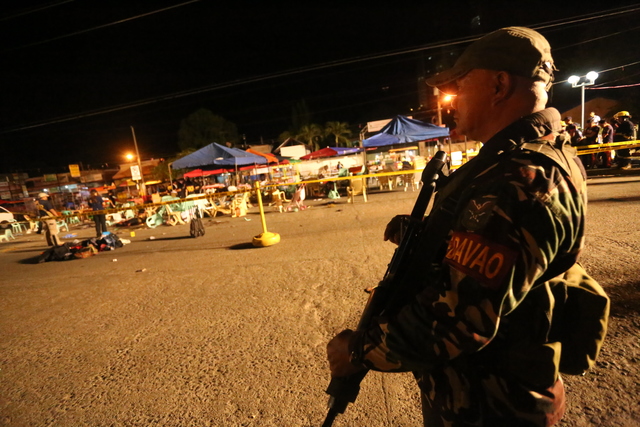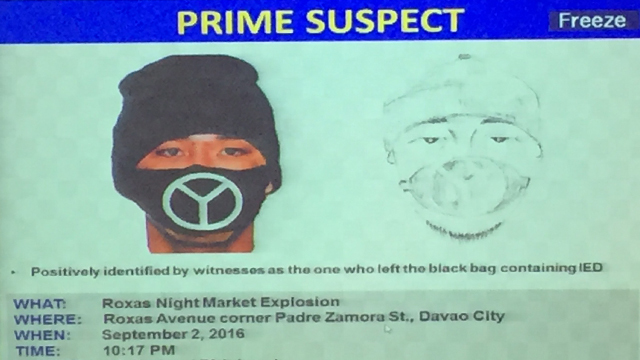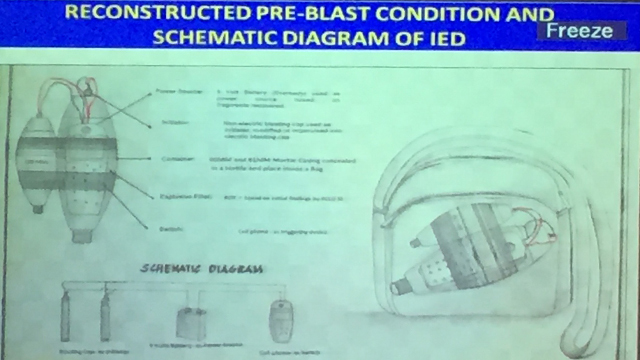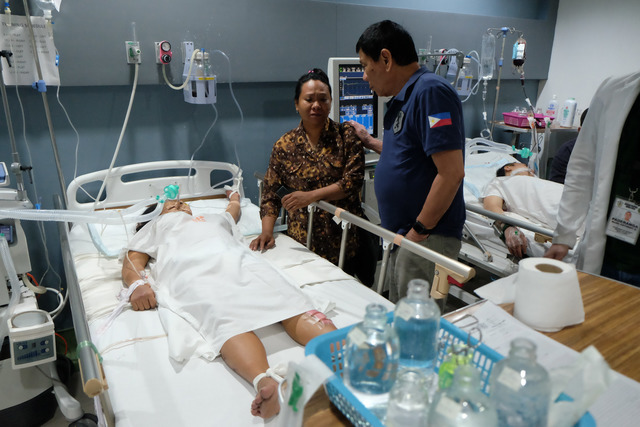Police are now hunting down one suspect and at least 3 'persons of interest'

ROXAS NIGHT MARKET. The Davao blast kills 14 and injures 70 more. File photo by Manman Dejeto/Rappler
Friday evening, September 2 was supposed to be just another busy night of food, friends, and the occasional P100-massage along Roxas Street in Davao City when an explosion occurred, claiming the lives of at least 14 and injuring 70.
The stakes are high. This is, after all, the hometown of President Rodrigo Duterte, where he had served as mayor for over 2 decades. He wants answers, and wants them fast.
Below is what Rappler has gathered so far about the bombing from police sources, local government officials, and previous news reports as of September 7, 2016.
What happened on September 2, 2016?
Davao City police chief Senior Superintendent Michael John Dubria said “one person” carried the explosive device inside a bag.
He – they’ve already identified him as male, about 5'7" tall – went for a massage in one of the stalls at the night market. He did not finish the massage and “left hurriedly," leaving behind a bag, based on witnesses' testimonies. (READ: Davao blast: Man with backpack leaves after massage)

DAVAO BLAST SUSPECT. A composite sketch of the suspect, based on testimonies of witnesses. PNP photo
Police have yet to pinpoint the exact time the suspect arrived at the massage area or what time he left the bag containing the IED. But they're certain that all these things happened “a few minutes” before the actual blast, which occurred at 10:17 pm.
After the bombing, Davao City’s emergency responders arrived. The injured were taken to various hospitals in the city and the dead were recovered from the blast site.
Different police teams – Scene of the Crime Operatives (SOCO), Explosives Ordnance Division (EOD) personnel, among others – swept the blast site for evidence.
At least two government officials, one of them Davao City Vice Mayor Paolo Duterte, later on admitted to having received reports of a supposed bomb threat days prior to the blast.
Paolo Duterte, the President’s son, said that he received information of an attack in either Davao or General Santos City at least two days before September 2. But the vice mayor said he opted to keep quiet given that he was asked not to pass the information around, according to an Inquirer report.
Interior Department Secretary Ismael Sueno said he, too, received an intelligence report about an alleged plan of the Abu Sayyaf Group (ASG) to launch a terror attack.
It remains unclear what specific steps were taken by government officials in the wake of these intelligence reports, but Philippine National Police chief Director General Ronald dela Rosa was quick to downplay criticism amid allegations local authorities – police included – did not do enough to prevent the blast.
“Now is not the time for finger pointing,” said Dela Rosa, adding that even the best of intelligence bureaus – the United States’ Central Intelligence Agency, for instance – were not immune to terror attacks.
Nonetheless, Davao City Mayor Sara Duterte relieved Task Force Davao Colonel Henry de Leon. She also appointed Benito de Leon, a retired military general, as the new chief of Davao's Public Safety and Security Command Center.
WHAT EXPLODED?
A little less than 24 hours after the bombing, Dela Rosa announced that it was an improvised explosive device (IED) that exploded at the night market. The IED, he said, was a 60-millimeter mortar round.
Dubria would later present to media fragments of the mortar round that had been recovered from victims of the blast.
By Tuesday, September 6, the investigation would show that two mortar rounds – 60 mm round and another 81 mm round – were used in the blast.

PNP photo
According to Dubria, the IED was detonated using a cellular phone. The initial theory is that the man who left behind the bag containing the IED was the one who also detonated it.
A couple of years later, an IED was detonated at the Davao City Overland Transport Terminal, killing a 12-year-old boy and injuring 5 others. The Abu Sayyaf claimed responsibility for the blast. Dela Rosa was also an intelligence officer during the so-called Ecoland Valentine’s Day bombing.
He was city police chief in 2013 when two explosions occurred at SM City in Ecoland and Gaisano Mall of Davao in Bajada. (READ: A history of bombings in Davao City)
IS A TERROR GROUP BEHIND IT?
Many were quick to point to the ASG as the culprit. It's been the target of intensive military operations in Sulu. Some 8,000 soldiers have since been deployed to the province to run after ASG members.
Duterte himself said days before the blast that he “expected retribution” from the group. (READ: Who's behind the Davao bombing?)
The ASG, through its supposed spokesperson Abu Rami, claimed responsibility for the blast. While officials were initially quick to acknowledge the claim, they grew lukewarm toward it later on.

BLAST SURVIVORS. President Rodrigo Duterte visits survivors of the deadly Davao City blast. File photo by Kiwi Bulaclac/PPD
Dubria, meanwhile, refused to declare that a terror group was behind it.
The police are exploring all possibilities. The perpetrators could be an “isolated group,” or a “disgruntled group having grudges [toward] different persons,” according to Dubria.
Dela Rosa added to the list the possibility of it being an act of “narco terrorism.”
“If the Abu Sayyaf can kidnap people for money, they can also bomb people for money. It’s all about money. So if I’m a rich drug lord, I can pay the Abu Sayyaf. I can pay them and tell them to plant bombs,” he said in Camp Crame on Monday, September 5.
Another possibility the police are looking at? Conflict among vendors at the popular night market.
WHO ARE POLICE PURSUING?
There are at least 4 "persons of interest" – either blast suspects or people who could identify the suspect – in the probe.
So far, the police are focused on the main suspect – the man who left the bag containing the IEDs. (READ: Police release sketch of suspect in Davao blast)
Police have identified at least 8 witnesses, who they are keeping away from the public eye. Footage from at least 8 closed circuit television (CCTV) units in the area is also being reviewed.
http://www.rappler.com/nation/145497-davao-blast-investigation

No comments:
Post a Comment
Note: Only a member of this blog may post a comment.